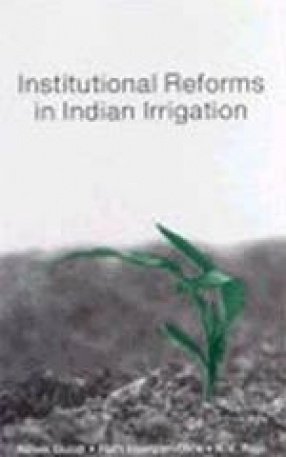
Ashok Gulati

Showing all 7 books

The debate over agricultural subsidies has been thrust to the forefront of discussions on India’s economic reforms with the signing of the Uruguay Round Agreement, now devolving on the WTO. This book examines the issue from various angles in order to move the reform process forward. It provides a detailed discussion of: The constituents of agricultural subsidies, India’s stand regarding support to agriculture, The magnitude ...

This book addresses the issue of resource use efficiency of indigenous production versus imports in the light of India's liberalization programmes since 1991 and the signing of the Uruguay Round Agreement in 1994. India's yellow revolution, associated with the quick spread of oilseeds since the 1980s, has received little attention as compared to the green revolution. The oilseed revolution took place in less irrigated areas with low and erratic rainfall, a region ...

As water resources become increasingly scarce in India and demand only increases, the challenge of sustaining irrigation systems and the lands they serve is a matter of crucial importance. In particular, the livelihood of millions of farmers is threatened. India's canal irrigation systems, which have so far made an enormous contribution to food security, are now in crisis because of increasing competition for water, poor management and declining funding. The ...

Pro-poor opportunities are rapidly unfolding in South Asia, Spurred by new lifestyles and tastes, stimulated by increasing incomes, spreading urbanization, and expanding globalisation, Dietary patterns are changing of both the poor and the rich, as well as rural and urban consumes, from staplefoodgrains to high value-commodities such as fruits, vegetables, milk, meat, eggs, and fish. The real challenge is how to grab these opportunities to alleviate poverty ...

The Doha Round of trade talks has been deadlocked since July 2006 mainly on account of differences relating to agriculture. If the negotiations eventually succeed in establishing a fair and harmonious agricultural trading system it will have far-reaching implications for trade and economic prospects of developing countries. To understand the reasons underlying the protracted stalemate and to assess the prospect of agreement on various proposals the trading ...

China and India are the two most extraordinary economic success stories of the developing world. Both the economies have grown dramatically over the past few decades, elevating them from two of the world's poorest countries into projected economic superpowers. As a result, the number of people living in poverty have rapidly fallen and per capita incomes in China and India have quadrupled and doubled, respectively. This book investigates how the dynamics in the ...

Over the past several decades Asia’s maize economy has expanded significantly, and in recent years Asia’s share of maize production has risen more rapidly. It is poised to grow even further, owing to direct and indirect demand generated from the region’s burgeoning animal feed and industrial sectors. This study covers seven Asian countries, namely China, India, Indonesia, Nepal, the Philippines, Thailand, and Vietnam. Together, these countries generate over ...
